The exact number of geese in the world is unknown.
But the current estimates on goose population worldwide are between 39.0 and 39.2 million wild geese in the northern hemisphere alone.
These birds belong to 68 different populations scattered across 15 distinct species, including the Canada goose, Barnacle goose, and Ross’s goose. It is difficult to determine the right number since these birds often travel great distances to find suitable habitats for breeding, hunting, and migration.
What are the seven subspecies of the Canada geese?
The Canada goose (Branta canadensis) is the largest living species of true geese. It has seven recognized subspecies — Giant, Interior, Atlantic, Moffitt’s, Lesser, Dusky and Vancouver.
Atlantic
The Atlantic Canada goose is a large, sturdy bird indigenous to the eastern coast of North America. Its long neck and black-and-white plumage make it easily recognizable to anyone familiar with this species. Despite their abundance in the wild, these geese have also been widely introduced to various parts of Europe, where they are considered invasive pests.
The Atlantic population of this goose inhabits wetlands and grasslands and feeds primarily on grasses and aquatic plants. During the breeding season, which takes place from April through June, nests are typically built in elevated locations just beyond the water’s edge.
These nests consist of a bowl made from matted vegetation with inner depths of up to 3 feet. Once eggs have been laid, both adults will work together to incubate them for about 30 days until hatching occurs.
Given its adaptive nature and remarkable resilience, the Atlantic Canada goose has proven itself to be one of the most successful species in its range. Moreover, as humans continue to modify their natural habitats at an unprecedented rate, these birds may become even more important as indicator species that can help us understand how living organisms adapt over time.
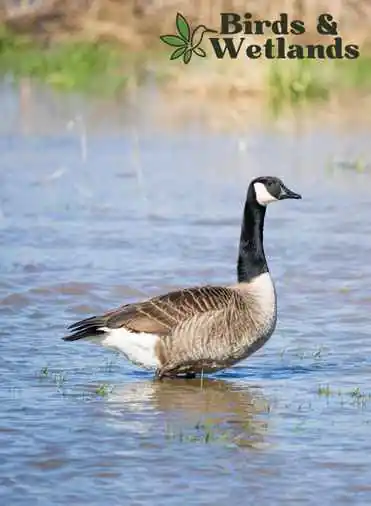
Giant
The giant Canada goose is a truly imposing bird. With its large body and thick bill, it is easily recognizable as the largest subspecies of Canada goose. These birds live across central North America and are known for their distinctive calls and larger-than-average size.
For starters, the giant Canada geese have a lower call than other variants of the same species of goose. Their deep and loud calls make them easy to distinguish from other geese. In addition, their bills have an especially large ratio between their body and bill size. This combination of characteristics makes them uniquely identifiable from other types of geese.
Perhaps the most distinctive feature of this goose is its black neck plumage, which extends much higher up on their necks than on other bird varieties. They also have a large white cheek patch that extends below their bills, making them look even more striking against their otherwise black necks and bodies.
Perhaps the most notable difference between this subspecies and others is the pale coloration of their underbellies.
Interior
The interior Canada goose is a large, medium-grey-breasted goose widely distributed throughout much of northern Canada. It has a black neck and front of the head, along with its distinctive white cheek patches. The interior Canada goose typically spends winters in southern parts of Canada and in the US states of Florida and Louisiana.
During the breeding season, this bird inhabits northern Quebec, Ontario, eastern Manitoba, and southern Hudson Bay. The interior Canada goose breeds primarily from April to June. During this time, it makes its nest in grassy areas relatively close to water, often on slightly elevated terrain.

Moffitt’s
The Moffitt’s Canada goose is a large goose, characterized by its long neck and bill and its white patches over the eyes or forehead. This subspecies is native to western interior North America surrounding the Rocky Mountains.
Due to its range expansion through various introductions in other regions of western North America, it is one of the most widespread subspecies of goose today. Due to its large size and abundance, it also makes for an important source of food for local wildlife.
Dusky
The dusky Canada goose is recognized for its dark coloration and small population. This goose is typically warm brown, with a creamy buff on the breast and gray on its body. Dusky Canada geese are among the rarest subspecies of the Canada goose, found primarily in western North America.
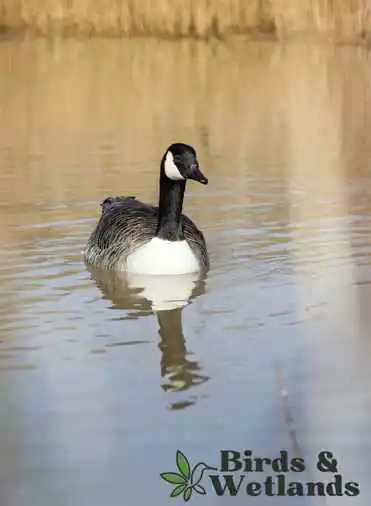
Vancouver
The Vancouver Canada goose is a type of waterfowl breeds throughout coastal southeastern Alaska and into northern British Colombia in Canada. Given its range, it is unsurprising that this particular breed is mostly sedentary, with only a small percentage (around 2%) migratory.
During the winter months, migrating geese travel south to the warmer climates of the northern United States, where they spend their winters before returning to Canada again in the spring.
Many of these birds spend winters in wildlife management areas. In addition to its native breeding grounds in Canada and the northern USA, the Vancouver Canada goose also has wintering grounds in Washington State and the Pacific coast.
Lesser
The lesser Canada goose ranges throughout much of northern North America. During the winter, this geographic range often extends into the southern United States and even into Mexico. In addition, this subspecies has been spotted as a non-breeding visitor in Washington State.
During the early spring and summer months, these geese breed mainly in Alaska, as well as in some parts of Canada and western Canada. While these birds are typically found across a wide region in North America, they prefer more open, sparsely vegetated habitats for nesting and raising their young.

How many Canada geese are there in North America?
The Canada goose is one of North America’s most iconic bird species, recognized for its distinctive black head and neck and elegant white patches. But just how many of these majestic birds are there?
The answer to this question is constantly changing, as the population of Canada geese ebbs and flows with environmental conditions. Still, current estimates suggest around 3.6 million resident Canada geese across North America.
This number represents an increase from historical estimates of around 1.3 million birds just a few decades ago. Some experts believe that this dramatic rise can be attributed to factors such as changes in atmospheric conditions and agricultural practices, which have caused nesting sites to become less favorable for local populations of Canada geese.
What is the difference between migratory and resident Canada geese?
Migratory and resident Canada geese are two distinct populations of this iconic bird. While there are similarities between the two groups, such as their long necks and distinctive black and white plumage, there are also key differences in behavior, migration patterns, and habitats.
The most obvious difference between migratory and resident geese is their migratory behavior.
Migratory Canada geese spend the summer months nesting and raising their young in northern parts of North America, such as Alaska and Canada. During winter, migratory geese typically migrate south to California or Mexico, where they feed on food like grasses, aquatic plants, insects, fish, frogs, small mammals, and even worms.
In contrast, resident Canada geese tend to remain in a specific location for most of the year. This could be a lake or pond near a city, a rural area, or even an urban park. Regardless of their home range, most Canada geese have access to abundant food sources such as grasses and other vegetation types year-round.
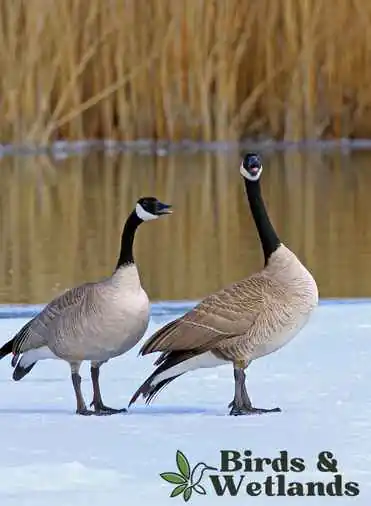
Is there an overpopulation of Canada geese in North America?
Yes, and Canada geese are burdening the North American ecosystem, largely because of overpopulation. Canada geese nest at local parks, golf courses, residential lakes and lakeside yards throughout much of North America. Many of these Canada geese are non-migratory and remain in their nesting locations year-round.
This change in the migratory behavior of nuisance geese can be attributed to a lack of natural predators and readily available food sources. Because these geese prefer to feed on short, nutrient-rich vegetation in open areas, the well-manicured lawns that are typical of corporate campuses, residential properties, and golf courses are highly desirable.
Are Canada geese protected under the Migratory Bird Treaty Act?
Yes, Canada geese along with other goose species such as the snow geese and Ross’s geese are protected under the Migratory Bird Treaty Act. This means that migratory birds and many species of other animals are afforded special protections designed to help ensure their long-term survival.
In particular, the act stipulates strict regulations around the hunting of Canada geese. For example, these wild birds can only be hunted during regulated hunting seasons and within certain parameters, such as limits on when and where they can be killed.
Additionally, special rules may apply in some areas to protect local Canada goose populations or to restrict the use of harsh killing methods such as hunting them with lead shots.
In most states, it is illegal to relocate captured geese due to the risk of disease transmission; however, geese may be relocated to a different portion of private property to mitigate localized damage.

How can Canada goose population be controlled?
When it comes to Canada goose populations, several different approaches can be used to manage them. At the most basic level, one effective method is to limit flock growth by limiting the number of eggs that geese lay each year.
In addition, geese can often be frightened or coaxed into moving on by making the habitat less attractive to them. For example, building a fence along a body of water or adding noise and light sources can help dissuade most geese and other species of waterfowl from settling in an area.
Additionally, working with local governments and other stakeholders on habitat changes, such as adding native plants and modifying irrigation practices, can further discourage adult geese and goslings from locating in specific areas.
Sport hunting does not specifically target resident Canada geese. Because the population management effectiveness of this strategy is variable, it will not likely be effective at lowering the goose population in our area.
As part of population management, the U.S Fish and Wildlife Service has been working closely with state agencies to set hunting regulations and raise the daily bag limit.
By using a combination of these methods, it is possible to control goose population growth and prevent future proliferation.
Can Canada geese be culled?
There is no easy answer to the question of whether or not Canada geese can be successfully culled.
On the one hand, state and federal laws prohibit harming these birds without explicit permission from the U.S. Fish and Wildlife Service (in the US) or Canadian Wildlife Service (in Canada). Any attempts to cull Canada geese must be carefully planned to abide by local and federal regulations.
On the other hand, local populations of Canada geese are growing at an alarming rate, causing significant damage to lawns and parks throughout urban and suburban areas. Furthermore, widespread human feeding has been believed to have altered their migratory patterns, keeping them year-round in some regions.
As a result, many communities are starting to explore potential methods for culling these beloved but disruptive birds. While it may not be an easy solution, culling Canada geese may be one effective way to protect local wildlife and maintain the natural balance of nature.
Many animal rights organizations are against culling and advocating for humane lethal methods such as removing individuals and suppressing reproduction such as applying corn oil to the eggs.
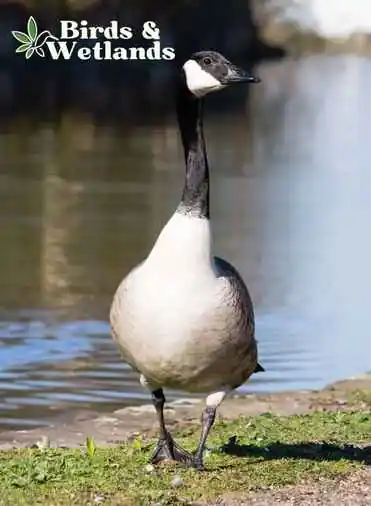
Can you hunt Canada geese?
Yes, you can hunt Canada geese within certain limitations. While there are several restrictions about hunting Canada geese, particularly in terms of dates and locations, these birds can typically be hunted during the regular waterfowl season. This means that hunters must abide by state and federal laws governing the details of hunting Canada geese, including requirements for licensing and permits.
Additionally, there are limits on how many Canada geese a hunter may kill in any given season. Due to the ballooning goose populations, the US goose harvest is also increasing.
How many cackling geese are there in North America?
The cackling goose is a migratory bird found throughout North America. This large waterfowl typically winters in the southern portions of the continent, ranging from Mexico and Florida up to northern California and Washington.
When not migrating, cackling geese generally breed in Canada, particularly in the hilly tundra regions of the country. Due to their extensive range, it’s believed that there are somewhere between 800,000 and 1 million individual cackling geese in North America today.
What makes this particular species of goose unique is its distinct honking sound, which has earned it the nickname “cackle” or “honker.” Though slightly smaller than other goose species, these birds are tough and hardy, with strong feet perfect for foraging for food on rough ground.
Additionally, as migratory waterfowl spend much of their lives on the move, cackling geese are well adapted to weathering extreme conditions such as freezing cold temperatures and heavy snowfall. This ability provides them with protection from both natural predators and human hunters alike.
Given their numbers and resilience, it seems likely that the cackling goose will remain an important part of North America’s ecosystem for years to come.
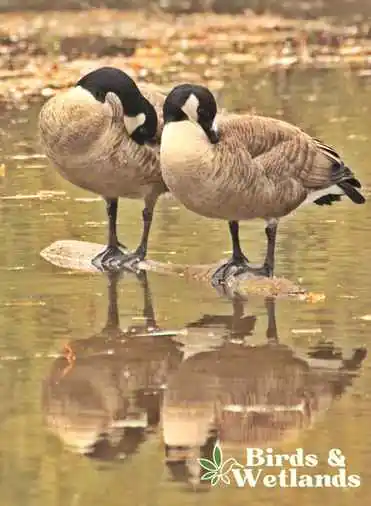
Key Points
Habitat modification, mild climates, easily available natural resources, and lack of potential predators are only a few of the factors that contributed to the rising population size of the Canada goose in the United States and Canada.
Canada geese are a migratory species of a goose but large groups of these geese have remained in rural and urban areas.
Many people consider large flocks of Canada geese nuisances because of property damage, goose droppings, aircraft strikes, degradation of water quality and crop damage.


